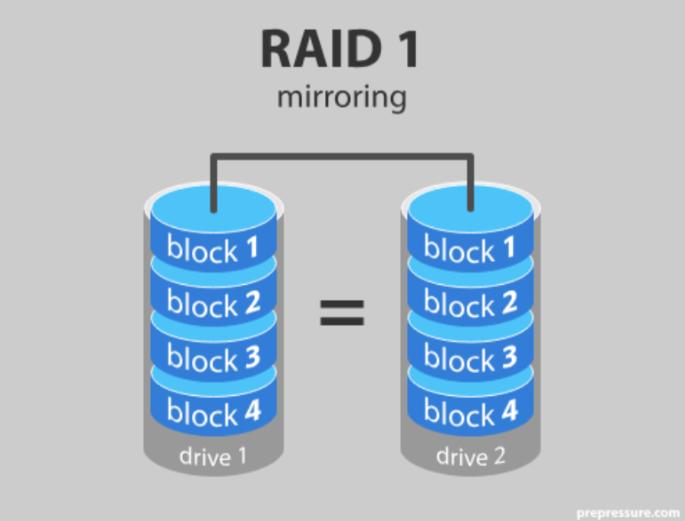



Ī RAID 0 setup can be created with disks of differing sizes, but the storage space added to the array by each disk is limited to the size of the smallest disk. RAID 0 is normally used to increase performance, although it can also be used as a way to create a large logical volume out of two or more physical disks. This configuration is typically implemented having speed as the intended goal. Since RAID 0 provides no fault tolerance or redundancy, the failure of one drive will cause the entire array to fail as a result of having data striped across all disks, the failure will result in total data loss. RAID 0 (also known as a stripe set or striped volume) splits (" stripes") data evenly across two or more disks, without parity information, redundancy, or fault tolerance. For valuable data, RAID is only one building block of a larger data loss prevention and recovery scheme – it cannot replace a backup plan.
#The raid 1 software
While most RAID levels can provide good protection against and recovery from hardware defects or defective sectors/read errors ( hard errors), they do not provide any protection against data loss due to catastrophic failures (fire, water) or soft errors such as user error, software malfunction, or malware infection. The numerical values only serve as identifiers and do not signify performance, reliability, generation, or any other metric. RAID levels and their associated data formats are standardized by the Storage Networking Industry Association (SNIA) in the Common RAID Disk Drive Format (DDF) standard. Multiple RAID levels can also be combined or nested, for instance RAID 10 (striping of mirrors) or RAID 01 (mirroring stripe sets). The most common types are RAID 0 (striping), RAID 1 (mirroring) and its variants, RAID 5 (distributed parity), and RAID 6 (dual parity). In computer storage, the standard RAID levels comprise a basic set of RAID ("redundant array of independent disks" or "redundant array of inexpensive disks") configurations that employ the techniques of striping, mirroring, or parity to create large reliable data stores from multiple general-purpose computer hard disk drives (HDDs). Any of a set of standard configurations of Redundant Arrays of Independent Disks


 0 kommentar(er)
0 kommentar(er)
